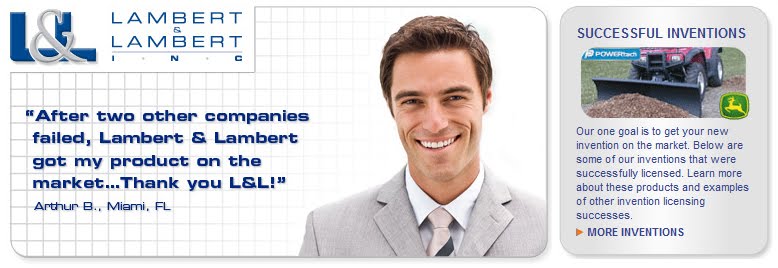Minneapolis, MN. Lambert & Lambert (http://www.lambertinvent.com) is gearing up for the 2013 trade show season. The major shows coming up in next couple months are listed below, but for a comprehensive list, visit our website at http://lambertinvent.com/tradeshows.php.

International Consumer Electronic Show
Dates: January 8-11, 2013
Location: Las Vegas, NV
Overview: The CES is put on by the Consumer Electronics Association, which is the preeminent trade association promoting growth in the $165 billion U.S. consumer electronics industry. It is the ultimate technology show with over 120,000 attendees last year.

PGA Merchandise Show
Dates: January 23-26, 2013
Location: Orlando, FL
Overview: The PGA Merchandise Show has evolved into comprehensive multi-purpose business platform since its roots in parking lots back in 1954. In addition to nearly 1000+ vendors representing every business sector of golf from market leaders to start-up companies.

International Toy Fair
Dates: Feb 10-13, 2013
Location: New York, NY
Overview: Toy Fair is the largest international toy trade show in the Western Hemisphere where the newest and hottest products in the children's entertainment marketplace are exhibited. It is the premier meeting place for manufacturers, retailers, importers, licensors and reps from around the world.
Have An Invention?
If you are an inventor and would like Lambert & Lambert to represent your product for marketing and licensing at one of these trade shows (or any others), visit our website or contact us to learn more.
About Lambert & Lambert:
Lambert & Lambert is a contingency-fee based invention marketing and patent licensing firm that specializes in consumer products. Based in Minneapolis, Minnesota, Lambert & Lambert provides services to inventors, product developers and small companies throughout the world and currently has products selling in numerous retailers.
Contact:
Tim Sherman, Director of Customer Service
Tel: 651-552-0080 | Fax: 651-552-7678
info@lambertinvent.com
Links:
Lambert & Lambert Homepage Lambert & Lambert Invention Blog
Lambert & Lambert on Facebook Lambert & Lambert on Twitter





